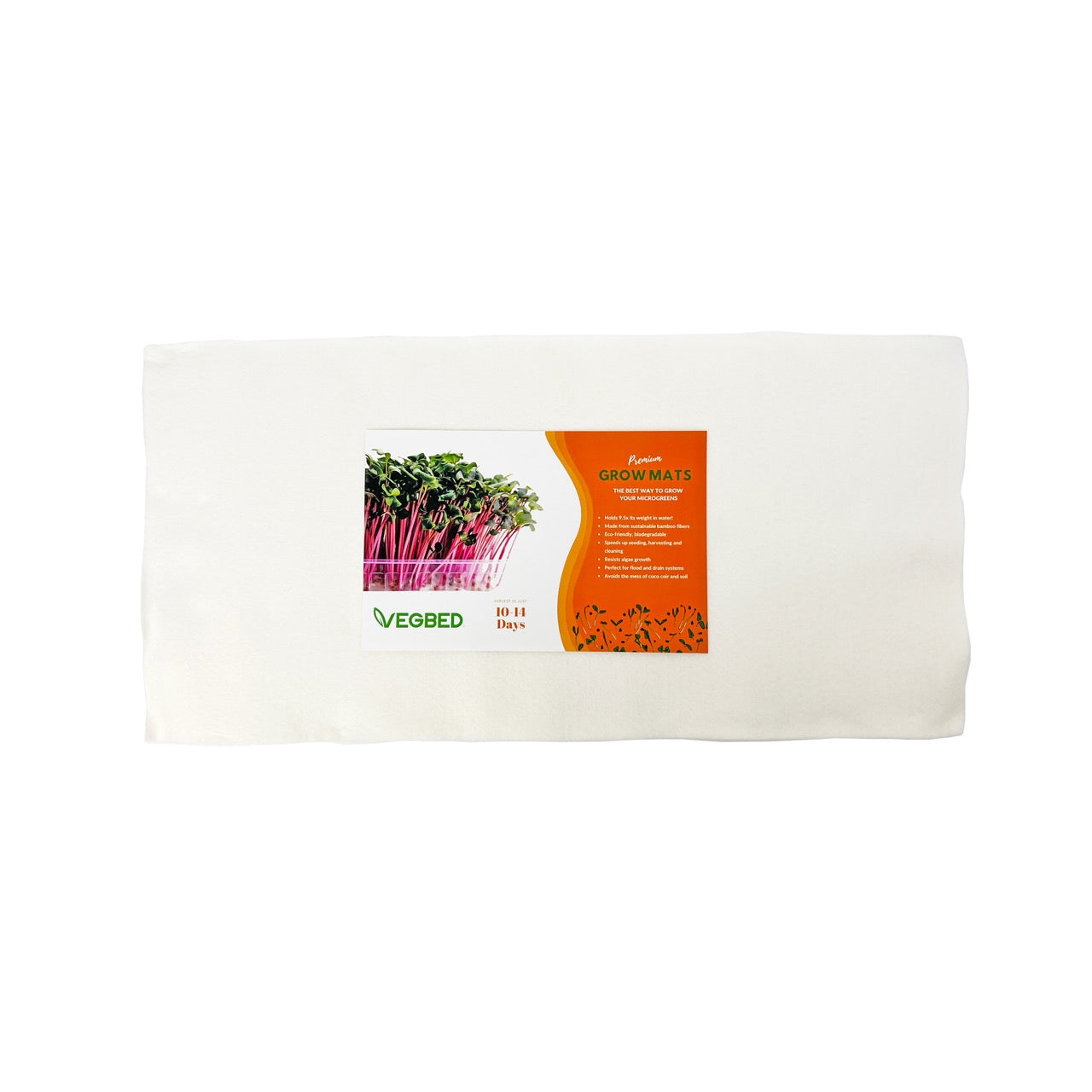When it comes to growing microgreens successfully, consistency is everything. Over time, the industry has fine-tuned best practices for seed density, lighting, and nutrient solutions, all based on one universal tray size: 10x20 inches.
This standardization ensures predictable growth, efficient workflow, and compatibility with most growing systems, making it the go-to choice for commercial and home growers.
But what about custom tray sizes? Some growers—particularly in Europe—opt for alternative dimensions to fit unique shelving, packaging, or distribution needs. While custom trays can be useful in certain situations, they often require adjustments in seeding rates, watering methods, and nutrient balance—adding an extra layer of trial and error.
In this guide, we’ll break down why the 10x20 tray remains the industry benchmark, what challenges arise with custom tray sizes, and how to determine if a tailored solution makes sense for your operation.
The 10x20 Advantage: Why It’s the Gold Standard
1. Seed Density Is Optimized for 10x20
One of the most critical factors in microgreen farming is seed density—the number of seeds sown per tray. Since most research, guidelines, and grower experience are based on 10x20 trays, it’s much easier to follow proven seed density recommendations without having to adjust ratios for custom tray sizes.
💡 Example: If a variety like broccoli requires 1 ounce of seed per 10x20 tray, using a smaller or custom tray means recalculating the seed-to-space ratio, which could impact germination and yield consistency.
2. Lighting & Coverage Are Designed for 10x20 Trays
LED and fluorescent grow lights are commonly designed to cover a 10x20-inch footprint. This ensures even light distribution across all seedlings.
🌱 Potential Issues With Custom Sizing:
-
A wider tray might receive uneven lighting, causing some microgreens to stretch while others remain short.
-
A smaller tray may not maximize the light’s coverage, leading to inefficiencies and wasted space.
With a 10x20 tray, lighting setups are optimized for consistent, uniform growth—a key advantage for commercial microgreen operations.
3. Nutrient Solution and Watering Are Based on 10x20 Standards
Most hydroponic nutrient solution recommendations are designed for a 10x20 tray’s surface area and root zone.
🧪 Considerations for Custom Trays:
-
Smaller trays might need weaker nutrient concentrations to prevent oversaturation.
-
Larger trays might require adjustments to water flow and drainage to avoid pooling or nutrient imbalances.
Since irrigation systems and hydroponic nutrient formulations have been tested and refined for 10x20 trays, growers who switch to custom sizes may experience a learning curve in dialing in the right nutrient balance.
4. Industry Adoption & Equipment Compatibility
Many of the biggest names in microgreens and hydroponics, including Optimal Green, exclusively offer 10x20 trays because of their efficiency, predictability, and compatibility with existing equipment.
From grow racks to automated watering systems, seeders, and harvest tools, nearly all commercial-grade microgreen equipment is built around the 10x20 standard.
Switching to custom trays may require investing in custom shelving, lighting arrays, and irrigation setups, adding to operational complexity.
When Custom Tray Sizes Might Make Sense
While 10x20 remains the go-to size for commercial growers, there are a few cases where custom tray sizing can be beneficial:
1. Selling Live Microgreens to Chefs & Retailers
A 10x20 tray might be too large for direct-to-consumer or restaurant sales. A smaller tray size (e.g., 5x10 or 7x14) could be a better fit for:
✔️ Chefs who want fresh, live microgreens but don’t need a full 10x20 tray.
✔️ Grocery stores or specialty markets offering pre-cut or live trays.
2. European Growers Using Regional Sizing
Some European companies use alternative tray sizes that fit regional shelving and growing systems. Growers in these markets may need customized trays to integrate with their existing setups.
3. Space Constraints in Urban & Indoor Farming
If a grower has limited shelf space, smaller trays could maximize their available growing area while maintaining efficiency per square foot.
4. Specialty or Experimental Crops
Certain microgreen varieties might thrive in non-traditional tray sizes, especially if they require unique spacing or watering conditions.
Can You Order Custom-Sized Grow Mats?
At Vegbed, we understand that not all growers use the 10x20 format. While we recommend sticking to industry standards, we can accommodate custom sizing requests for bulk orders (MOQ applies).
If you’re interested in a custom grow mat size, reach out to us at https://www.vegbed.com/pages/order-form —we’re happy to discuss options that fit your growing needs!
Final Thoughts: Should You Stick With 10x20 or Try Custom Sizing?
For most growers, sticking with 10x20 trays ensures:
✅ Predictable seed density, lighting, and nutrient balance.
✅ Compatibility with existing growing systems and equipment.
✅ Less trial and error, meaning faster, more consistent harvests.
However, if your business requires a different tray size—whether for chef sales, retail, or regional preferences—a custom tray could work, but expect to make some adjustments.
🚀 Want to explore custom grow mats? Contact Vegbed to discuss how we can help you optimize your setup.



